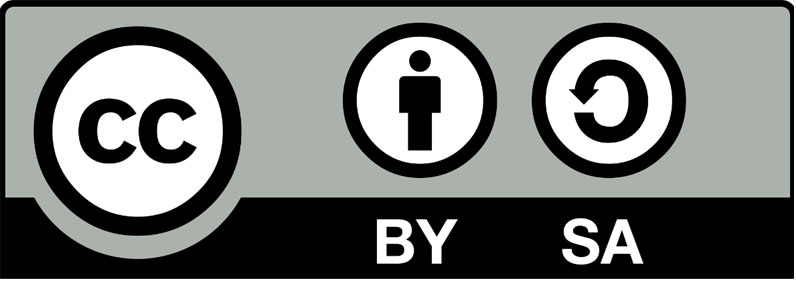OPTIMIZATION OF STORE LAYOUTS AND INTERIOR DISPLAY DESIGNS IN INDONESIAN BATIK RETAIL ARCHITECTURE ATMOSPHERE
Abstract
Keywords
Full Text:
PDFReferences
Alawadhi, A. and Yoon, S. (3026) ‘Shopping behavioral intentions contributed by store layout and perceived crowding: An exploratory study using computer walk–through simulation’, Journal of Interior Design, 41(4), pp. 29–46.
Anderson, B. (2009) ‘Affective atmospheres’, Emotion, Space and Society, 2(2), pp. 77–81.
Baker, J., Levy, M. and Grewal, D. (1992) ‘An experimental approach to making retail store environmental decisions’, Journal of Retailing,
(4), p. 445.
Chai-Arayalert, S. and Suttapong, K. (2020) ‘Increasing potential of distribution channels for creative Thai hand-woven textile products in the digital economy’, Creativity Studies, 13(2), pp. 477–493.
Collier, J. and Collier, M. (1986) Visual anthropology: Photography as a research method. UNM Press.
Hamilton, A.B. and Finley, E.P. (2019) ‘Qualitative methods in implementation research: An introduction’, Psychiatry Research, 280, p. 112516.
Jang, J.Y. et al. (2018) ‘Store design: Visual complexity and consumer responses’, International Journal of Design, 12(2), pp. 105–118.
Khan, M.A. et al. (2022) ‘Impact of store design and atmosphere on shoppers’ purchase decisions: an empirical study with special reference to Delhi-NCR’, Sustainability, 15(1), p. 95.
Kotler, P. (1973) ‘Atmospherics as a marketing tool’, Journal of Retailing, 49(4), pp. 48–64.
Kyololo, O.M., Stevens, B.J. and Songok, J. (2023) ‘Photo-elicitation technique: Utility and challenges in clinical research’, International Journal of Qualitative Methods, 22, p. 16094069231165714.
Le, N. et al. (2024) ‘Multi-Sensory Marketing and Impulsive Buying Behavior: The Role of Impulsive Buying Traits’, Emerging Science Journal, 8(5), pp. 1764–1782.
Lindblom, A. (2023) ‘Sensory Marketing in Retail’, in An Introduction to the Multisensory Nature of Retail Stores.
Natarajan, K. and Murugesh, V. (2023) ‘A Study on Prospects and Challenges of Small Independent Textile Retailers’, SHODHSAMHITA, 8(11), pp. 37–43.
Oğuzhan, Ç. and Ultav, Z.T. (2022) ‘Effects of interior design components on customer shopping behaviors in visual merchandising: The case of a retail furniture store’.
Prasetyo, A. (2020) Elisitasi Foto: Metode Pengumpulan Data dalam Penelitian Visual. ISI Press.
Regoczi, D. and Shanmugam, S. (2024) ‘Methodological considerations and reflection on using online photo-elicitation techniques to explore students’ professional doctorate journey’, International Journal of Research & Method in Education, 47(3), pp. 246–259.
Røddesnes, S., Faber, H.C. and Jensen, M.R. (2019) ‘NVivo courses in the library: Working to create the library services of tomorrow’.
Shahid, S. et al. (2022) ‘The role of sensory marketing and brand experience in building emotional attachment and brand loyalty in luxury retail stores’, Psychology & Marketing, 39(7), pp. 1398–1412.
Siregar, A.P. et al. (2020) ‘Upaya pengembangan industri batik di Indonesia’, Dinamika Kerajinan Dan Batik, 37(1), p. 374833.
Siringoringo, H., Dharmmesta, B.S. and Sugiharto, T. (2009) ‘Model Pengaruh Persepsi akan Toko Ritel Modern pada Pengalaman Berbelanja’, E-Journal Gunadarma, 1(1), pp. 1–11.
Spence, C. et al. (2014) ‘Store atmospherics: A multisensory perspective’, Psychology & Marketing, 31(7), pp. 472–488.
Tlapana, T. (2021) ‘The impact of store layout on consumer buying behaviour: A case of convenience stores from a selected township in Kwazulu Natal’, International Review of Management and Marketing, 11(5), p. 1.
Turley, L.W. and Milliman, R.E. (2000) ‘Atmospheric effects on shopping behavior: a review of the experimental evidence’, Journal of Business Research, 49(2), pp. 193–211.
UNESCO Intangible Cultural Heritage (no date) Indonesian Batik. Available at: https://ich.unesco.org/en/RL/indonesian-batik-00170 (Accessed: 21 January 2024).
Wiryanto, R., Husein, A.E. and Ng, H. (2024) ‘Analysis of potential and direct sales strategies in the textile sector in the digital era’, Journal of Management Science (JMAS, 7(3), pp. 431–437.
DOI: http://dx.doi.org/10.12962%2Fj2355262x.v24i1.a22749
Refbacks
- There are currently no refbacks.
Indexing and Abstracting :

Journal of Architecture & Environment is licensed under a Creative Commons Attribution-ShareAlike 4.0 International License








